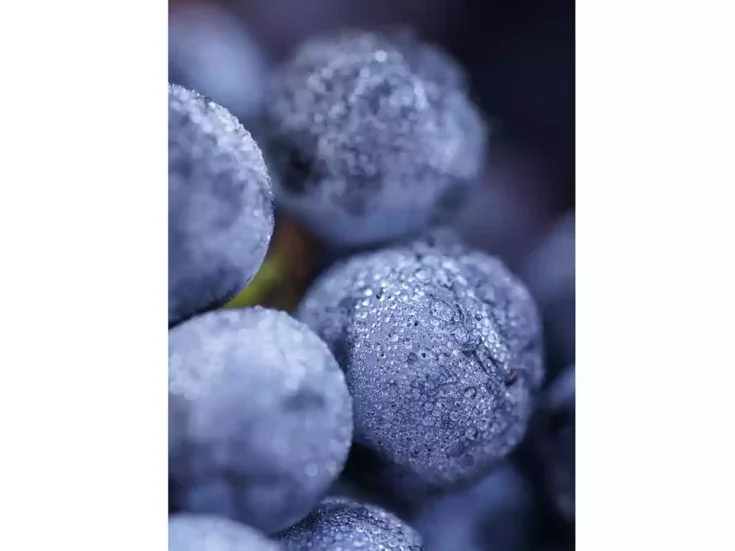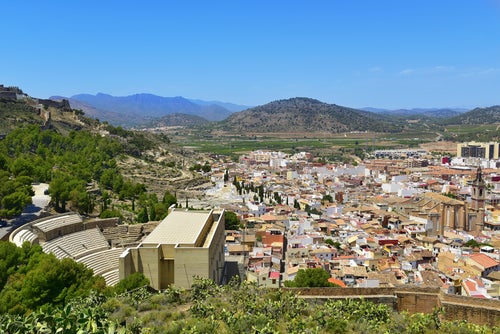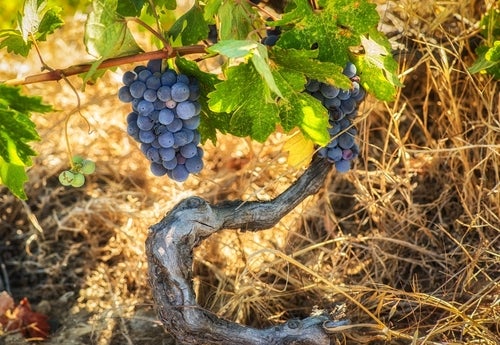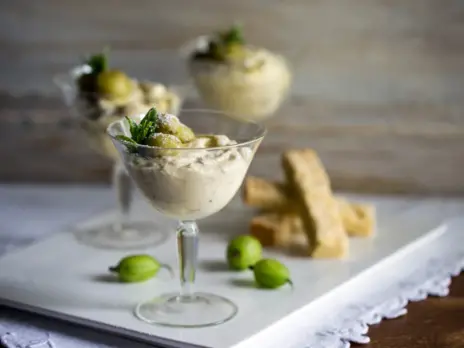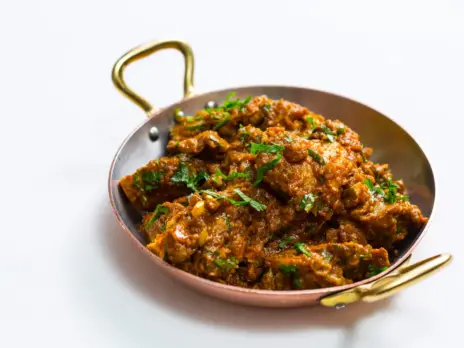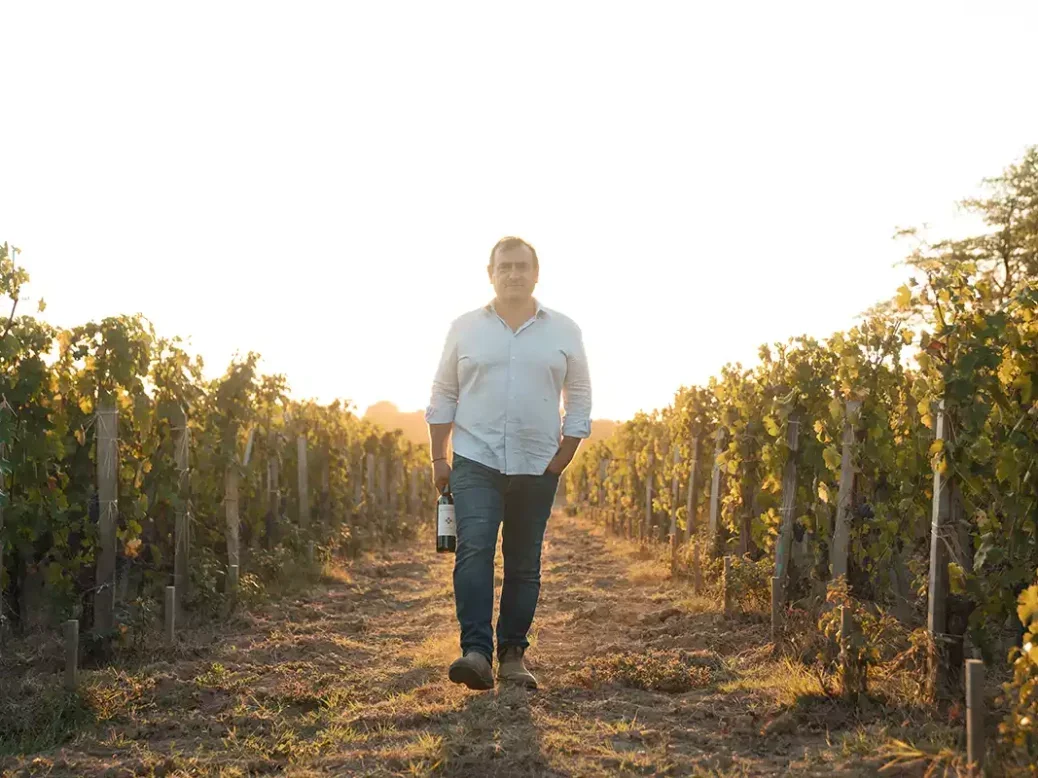
I tried, when talking to Pascal Chatonnet, to take him back to a time before wine became his life. He went back in stages—to founding his laboratory, Excell, to doing a doctorate, to doing the previous doctorate. I kept saying, Yes, but before wine; before wine. But there wasn’t a time before wine. He’s a chemist by interest, a lawyer by intellect and demeanor, and a problem-solver—almost an escapologist. Give him a knotty problem, and he’ll find a route out.
His family has been in St-Emilion since the 16th century, as coopers and stonemasons—indeed, they owned what is now Château Ausone when it was a quarry. (The Vauthiers are cousins; his grandfather wasn’t particularly interested and sold Ausone after World War II.) He is now in charge of the family properties—châteaux Haut-Chaigneau, La Croix-Chaigneau, and La Sergue in Lalande de Pomerol, and l’Archange in St-Emilion—and if he had been in line to inherit Ausone, he would probably never have done the work he has done on cork taint and Brettanomyces, and the wine world would be a poorer place, and a smellier one. If you were going to trace a motif through his career, you might pick on cooperage, since Seguin Moreau funded one of his theses—but I’m not going to be that obvious. In any case, his thought about the wine of the future is that it needs to be accessible to a new generation, which means less alcohol, more freshness, and less focus on aging because it’s too complex. Not that he’s a fan of dealcoholized wine. “Dealcoholized red wine is not drinkable,” he says firmly.
His grandparents managed a few vines, and his parents, Jeanine and André, had a company supplying all the products and equipment needed to grow vines. His parents also had a small vineyard in Montagne St-Emilion, which they sold to buy a vineyard in Lalande de Pomerol, really as a hobby; “and I appeared,” says Chatonnet. So, vineyards were only partly a family heritage, and Chatonnet wasn’t interested in continuing his parents’ business. So, what was he going to do? He didn’t know.
At 18 he went to Bordeaux University to study viticulture, then enology. “I developed a laboratory in the basement of the house while I was at college,” he says. You didn’t blow up the house, though? “Nearly, sometimes.” Then came his one-year military service. And would you believe it, the army sent him to the university, to where it was subcontracting its food quality control. So, there he was in the lab, checking the quality of army food. The director of the lab had been his professor a year before.
And then there was the manager of the microbiology lab, who was married to a professor at Bordeaux University who specialized in teaching tasting, and she said to Chatonnet, When you’ve finished the job at the lab and in the army, go and see my husband at the Institute of Enology.
The husband, of course, knew Chatonnet’s parents because they all made wine on the Right Bank. He had a research project analyzing categories of compounds in wine coming from oak, and he needed help. “He needed to be able to put a figure on it, to say at what point compounds become detectable on the palate,” says Chatonnet.
“I was very successful,” says Chatonnet matter-of-factly—and fast. He talks fast; fast and intently. He’s direct, and sometimes people might take offense, but “I always say what I am thinking. I write what I think as well. If I feel people are wrong, I tell them all the truth.”
This is a tangent, albeit a revealing one. We need to get back to that lab. “I did the methodology to analyze volatile phenols. The lab said I could stay for two years. Okay. My parents were very active and were not looking for me.” His father, though, stopped working in sales and in 1981 dedicated his time to his vineyard; his mother continued the business alone, because it was quite important, until they sold it in 1989–90. Both of them then focused on the estate, which had been in poor shape.
In 1991, Chatonnet published his first findings on aging wine in barrel; he discussed how to toast and how to select wood. He was sponsored in all this work by Seguin Moreau, who at that time made a lot of barrels for Cognac and wanted to adapt their barrels to wine. They’d sponsored a couple of students before Chatonnet: The first was Paul Pontallier; “the second was a failure,” says Chatonnet; and then came Chatonnet, who stayed for 18 years.
He started working with Professor Ribereau-Gayon and did a second thesis on work he did with Didier Dageneau on wine aromas, yeast impact and contamination. In 1992 he set up his Excell laboratory, which focused on cork quality control, and spent half his time in the lab and half the time at the university. “I was working 18 hours a day until 2000; it was too much.” He began to wonder what his future should be. “Didier Dagueneau said I could be a professor, but I wasn’t sure that I wanted that. Seguin Moreau was still financing me at the university, but it was very political [at the university] and had an ambience I didn’t like. I’m too independent. In 2000, I left. I continued to work with Seguin Moreau, but in Excell.”
The laboratory grew. In 1993/94, the problem of TCA in wineries was discovered, first in France and then all over the world. “I developed a solution to identify the problem. I identified Brett too; I didn’t discover it, but I identified it.” He devised a methodology to identify the phenols—“nobody knew it could produce phenols in red wine”—but he still had to find where it came from. “Barrels are one factor, but also the management of barrels. I revised the early methodology to deal with it.” And this is what he does—analyze a problem, quantify it objectively, and solve it. Or did, anyway; he hasn’t been involved in lab work since 2023. Now he mixes a scientific approach with a legal point of view; he’s been an expert witness in cork-related court cases since 1999. He’s been a technical consultant to Amorim and remembers when, in 1994/95, “Gallo gave them one year to reduce cork taint by 80%, or they would use plastics.”
Intuition first
It’s as a consultant that most of us who haven’t been engaged in the fight against TCA or Brett know him. For many years, he worked with Michel Rolland, though his style of winemaking is very different.
“In 1997, Michel called me. We had lunch, and he said he wanted to develop his lab more; he said, ‘We can’t do the things that you do.’ I was consulting a bit then, but I was spending most of my time in the lab. We developed a synergy.” They first worked together in Argentina, at Clos Siete, for which they needed to develop a lab in Argentina, and Chatonnet could develop his consulting business at the same time. “It was the second that interested me more. The project was to merge our labs and our consulting, to see if we could work together or not, then merge our labs.” The suggestion was that Excell would buy Rolland’s share in his (Rolland’s) lab. “After three years of investigation, Dany [Rolland] said, ‘The offer is interesting, but we don’t want to sell any more.’” They decided they didn’t have the same philosophy, and Rolland kept some clients, while Chatonnet kept others. In all, they had worked together for ten years.
“Michel and I are like day and night,” he says, and he’s not just talking about winemaking styles; it’s ways of working as well. “Michel says, Do this and do that; I say, You might want to try this or that. Michel’s way is not my way.” But at the same time, he can be firm with clients if he needs to be. “I’m sometimes more direct at some wineries; it depends on the staff… I can have big fights with individuals—if the owner tells the winemaker that there is going to be a consultant, and the winemaker doesn’t accept that. I try to take people with me.” But if it doesn’t work and he doesn’t want to stay, he won’t. He’ll do the job, and that’ll be that. “If I don’t want to stay, I don’t care. I stay one week, one month, whatever.”
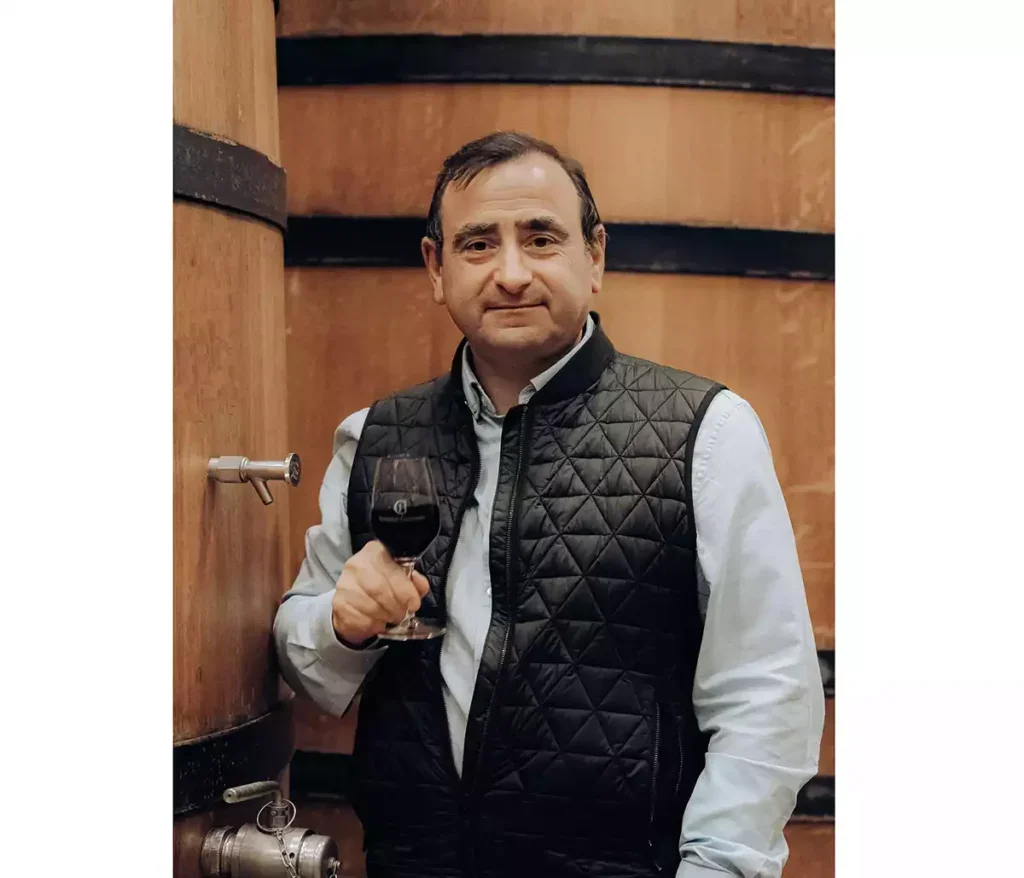
Chatonnet at one of his family châteaux, where he now spends most of his time, though he still consults at Vega Sicilia and other estates.
“Making wine is part technical and part emotional,” he says later. “You can have consultants who are all chemistry and no emotion, and others who are all emotion and no technology. But wine is a combination. When you do research, it starts with intuition: I have an idea. The next stage is scientific.” How to approach a problem is something he learned from Didier Dagueneau. “He was my professor; he was a very interesting guy. We had a nice relationship; we had some fights in terms of personality—because he was a strong personality, and I was, too—but it was based on respect. He was my mentor.”
As a consultant, Chatonnet has the philosophy of always trying to work direct with a client, not via a team of people. “I do it personally. I work with about 30 wineries; I did a lot in South America, Canada, the US a bit, Napa a bit, including Newton, which burned down. It was a big decision not to rebuild; they bought Phelps instead. Cloudy Bay until two years ago; they developed a new team there. During Covid I couldn’t go there. Argentina is very complicated with inflation—it’s difficult for them to pay you.
“In 2017, I was spending six months of the year away, and I decided to sell Excell. My partner wanted to retire, so we closed it in Chile but continued it in Argentina, where it’s not losing money. It’s doing well in Spain. In France and America, we sold it to a big company, Laffort. There was synergy between their labs and ours, so it worked well. And I had to turn the page.”
He didn’t want to grow the consultancy side but did want to keep his good clients: “I’ve worked with them for about 20 years.” In 2017, his father died, and he began to get involved in the technical side of his parents’ estate, though his mother managed it on her own until her death in 2022 at the age of 94. Suddenly it became his concern; his mother had managed it until her death. Until she died, his work was about 20% winery, 30% lab, and 50% consultancy. Now he spends two thirds of his time at the winery, where he is investing, and he’s reduced the consultancy side. “I take on new ones depending on opportunities… My mission is to have a team in a winery, a team I can trust. I made a nice team in Terrazas de los Andes; there’s a new manager now, he was the manager of Numanthia.” In Toro he consults for both Numanthia and Vega Sicilia’s Pintia, and when I visited Toro in April 2023, my impression was that his work with those two leaders is going to be vastly important in showing the rest of the region what is possible—if they want to do it.
Wanting to be sure
What is possible anywhere always depends on the economics. “When you have money,” says Chatonnet, “you can dream a lot of things. If you have no money, it’s more difficult.” At his estate he wants to develop the image and bring value. “The product is fundamental. But I need to develop the reputation of the brand.” In the five years, he says, they have lost volume equivalent to one whole crop. “But you can’t double the price because you’ve lost the crop.
“We started working with La Place when I was with the lab, and I had no time to do sales; I told my parents to go on the Place. Until 2001, most of the wine was sold on the Place—we offered 100% to the négoce. Then in 2001 we never sold a bottle on the Place. We had a very nice 2001; 2002 was not as good, and we had plenty to sell, but nobody wanted to buy it. So we developed a distribution company. It’s not a classified growth, and the négociants would disappear because they work only with what is easy to sell, the first growths and so on. All the rest need their own sales-distribution company. We have a small team, just two people and some agents. One salesman is dedicated to supermarkets, and one to the traditional areas and exports.”
He’s also preparing for the next generation. His daughter is an agronomist who works for Lafite Rothschild in sales and marketing. “You need to know how to sell your wine.” There are other shareholders in the form of his brother and sister, though they’re not active. Even so, “I can’t say what will happen in the end. It’s complicated. I can prepare the transfer, but I don’t know.”
What drives Chatonnet, though, is not the need to pass stuff on, or to make money, or to be “the first on the screen: I don’t have an ego. I have an ego, but not at this level.” Instead, his motivation is to make better wine. “I’m interested to see how things work, how they combine; when I understand that maybe I can influence this part or that part, to improve quality. My first motivation is to understand the parameters.” And he wants to be behind the wine, to be an éminence grise, which is in fact how he describes himself on his website.
No two wines, therefore, can be quite alike. “Blending Vega Sicilia is not like blending Bordeaux.” Bordeaux is pretty straightforward. “Vega Sicilia has five years of aging in barrels and vats, and you can’t do a blend like that. You have to do it in steps, have a consultation, another step. I have to check it every six months at Vega Sicilia; I don’t know how many tastings it takes to prepare the blend. It goes into tanks, into barrels… In Spain I work with quite big wineries like La Rioja Alta or Vega Sicilia, and there are maybe 25,000 barrels, so you can play, and start the blending process in the vineyard. Even for Protos, which is 1,200ha [3,000 acres], I start the process at vineyard level. Then this combination goes toward this style, that combination goes toward that style. It’s easy in a small estate and more complicated in a big one. It’s haute couture blending at barrel level.” He thinks constantly about what to do and does a lot of trials: “I want to be sure, to see what the wine is saying.”
There was a tasting of his wines in London in 2024, from all over the world, and what was notable was that if you hadn’t known they were all made under Chatonnet’s aegis, you’d have been hard pressed to see the connection between them. They were all good, some very good indeed, and they all spoke for themselves. Chatonnet was there in the room, but in the wings as it were—certainly not claiming the spotlight. Behind the wine and behind the scenes.

